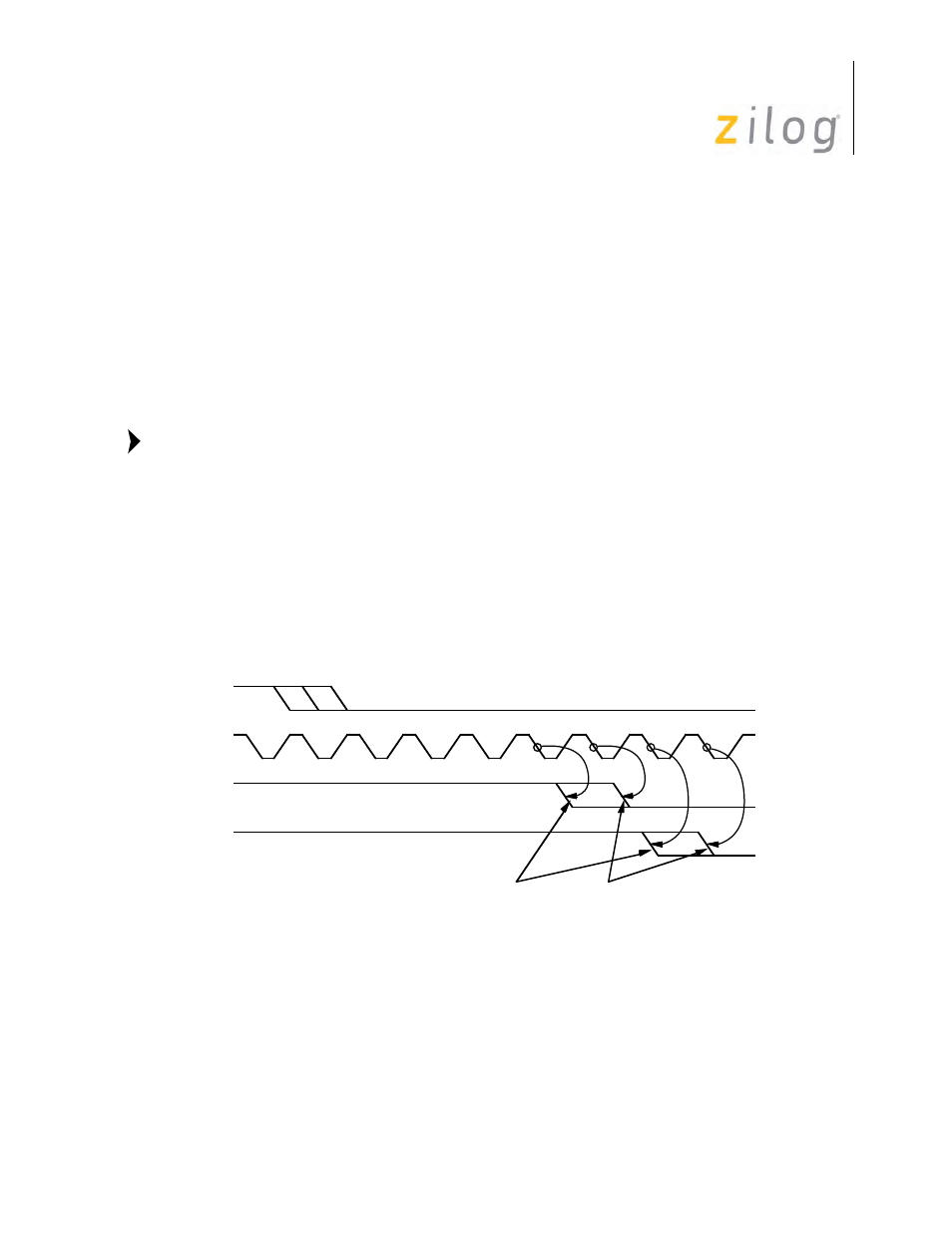Zilog Z80230 User Manual
Page 71

SCC/ESCC
User Manual
UM010903-0515
Interfacing the SCC/ESCC
64
DMA Request On Transmit (using /W//REQ)
The Request On Transmit function is selected by setting D6 of WR1 to 1, D5 of WR1 to 0, and
then enabling the function by setting D7 of WR1 to 1. In this mode, the /W//REQ pin carries the /
REQ signal, which is active Low. When this mode is selected but not yet enabled, the /W//REQ is
driven High.
The /REQ pin generates a falling edge for each byte written to the transmit buffer when the DMA
controller is to write new data. For the Z80X30, the /REQ pin then goes inactive on the falling
edge of the DS that writes the new data (see AC spec #26, TdDSf(REQ)) For the Z85X30, the /
REQ pin then goes inactive on the falling edge of the WR strobe that writes the new data (see AC
spec #33, Td-WRf(REQ)) This is displayed in
.
The /REQ pin follows the state of the transmit buffer even though the transmitter is dis-
abled. Thus, if the /REQ is enabled, the DMA writes data to the SCC before the transmitter
is enabled. This will not cause a problem in Asynchronous mode, but it may cause problems
in Synchronous mode because the SCC sends data in preference to flags or sync charac-
ters. It may also complicate the CRC initialization, which cannot be done until after the
transmitter is enabled.
On the ESCC, this complication can be avoided in SDLC mode by using the Automatic SDLC
Opening Flag Transmission feature and the Auto EOM reset feature, which also resets the transmit
on page 114 for details). Applications using other synchronous modes
should enable the transmitter before enabling the /REQ function.
Transmit Request Assertion
Note:
/TRxC
/REQ
(/DTR//REQ)
ASYNC Modes
SYNC Modes
PCLK
/REQ
(/W//REQ)
